A-Z of Car Stuff
This is one in a series of posts on cars, drivers, designers etc. that have interested me over the years. I’ve bored my family and friends with this stuff for years – now it’s your turn!
See A-Z of Car Stuff page for more posts in this series.
So, what’s so special about British Plastic?
Having explained in Part 1 where the term “British Plastic” came from I just wanted to expand in Part 2 upon my thoughts as to how and why such an unusually large number of British fibreglass car manufacturers came and went during the ’50s, ’60s and ’70s.
So Why The Plethora of Plastic?
Post-war austerity in Europe impacted victors and vanquished alike leaving erstwhile car designers and manufacturers with limited money and raw materials (especially sheet steel and aluminium) to create the vehicles they were itching to build.
Whilst there was a fundamental need to mobilise people through the provision of cheap basic transport – there was also a pent-up enthusiasm to switch effort away from necessary utilitarian wartime production to the more pleasurable pursuits of building specialist performance cars for use on the road and race track.
Building small, cheap and economical cars after WWII was not a radically new concept as it followed on naturally from the pre-war cars that came out of the 1930’s economic slump. Britain’s Austin 7 (built under license in Germany as the Dixi) typified this breed of small car. Italy in turn had the wonderful little Fiat Topolino and France had the miraculous corrugated shed that was the Citroen 2CV.
Some immediately post-war car manufacturing focussed on further reducing the size of cars being produced as this was one obvious method of using less precious metal in the process. This had the added advantage of producing lighter vehicles with improved performance and reduced fuel consumption (fuel being another commodity that was expensive and in short supply in the aftermath of the war).
Italy went down the route of building small family cars such as the Fiat Cinquecento (Fiat 500) and also it’s wonderfully compact people carrier variant the Multipla. Now iconic Vespa and Lambretta scooters also tackled the challenge of economic mobilisation of the masses through a variety of forms including van and pick-up truck versions of their scooters.
Germany took a more radical direction by creating a plethora of Kleinwagen or Microcars some of which were barely larger than the motorcycles or scooters from which their mechanical components were borrowed. This gave rise to quaint design classics such as the Messerschmitt, Isetta BMW, Fuldamobil and Glas Goggmobil.
Britain also embraced the Microcar concept with its own innovative small vehicles ranging from the minuscule Peel through the ’70s Ogle designed Bond Bug to that most iconic of small cars – the Mini.
Where I think Britain stands out in this post war car building boom however – was in the it’s approach to creating such a wide range of specialised cars primarily using fibreglass bodywork to create highly individual lightweight, high performance specialist cars which proud owners (and sometimes constructors) could use as day to day transport and for weekend forays onto the race track.
The predilection for plastic among small scale British car manufacturers seems to have started with Dick Shattock’s RGS Atalanta. Other designers and builders recognised the potential of this new body material and followed Shattock’s lead.

The British Plastic movement then burgeoned – with initial focus on alternative lightweight bodies for rather mundane proprietary rolling chassis later evolving through the provision of lightweight ladder and space-frame chassis and complete fibreglass bodies and monocoques – to create altogether new and unique cars.
Through the ’60s and early ’70s the benefits of selling specialist cars in kit form declined and this exposed the relatively high cost of fully built specialist cars when compared to the new wave of cheap mass produced sports cars and sports saloons. This was enough to have a terminal impact on the cash-flow of many specialist producers but difficulties in obtaining engines and other component parts put even more out of business forever.
Some companies survived longer than others before succumbing to the inevitable (Marcos and TVR) with a small number of companies actually thriving or being revived by moving up-market (Lotus) or by finding niche markets (Ashley, Caterham, Darrian and Ginetta).
What can be said about the whole experience is that British design ingenuity and practical engineering skills were exploited to full effect to enrich the automotive gene pool for many years to come. Where would the automotive world be without these wonderful specials?
British Plastic – Part 1 covered the following marques:-
- Ashley, Berkely, Caterham, Clan, Daimler Davrian/Darrian, Elva, Fairthorpe, Falcon, Gilbern, Ginetta, Gordon Keeble and Jensen
British Plastic – Part 2 continues with:-
- Kougar, Lenham, Lotus, Marcos, Ogle, Marcos, Peerless, Piper, Reliant, RGS, Rochdale, Tornado, Turner, TVR, Unipower, Warwick and WSM
Read on……………….
Kougar
Established in 1979 by Rick Stevens – these ’50s styled cars were initially marketed by Stortcourt Wells Ltd. Stevens’ initial aim in creating the ’50s styled sports car was to simply to utilise mechanical components from a then low value S-Type Jaguar in a retro-styled light weight body/chassis unit.
Final styling of the car was not based upon one specific model but was certainly influenced by the Frazer Nash TT Replica, HWM Jaguar and the Healey Silverstone and I think the end result is rather handsome.
My first close-up introduction to Kougars was at Brighton Speed Trials in the 1980s. I was really struck by their simple but elegant lines and I really liked how they brought new life to what might otherwise have been perfectly serviceable but zero-value scrap-yard-destined Jaguar running gear.
Thankfully Kougar Cars Ltd is still in operation under the ownership of Simon Dunsford who’s background was in the restoration of racing Jaguars. So the good news is that you can still buy these great looking body/chassis units known now as the Kougar Sports or the more fully enclosed body styled Monza from Kougar Cars to build up your own car using jag engine, transmission and suspension. I’m sorely tempted!
Lenham
Lenham is an interesting company. Founded in 1962 by John Booty and David Miall-Smith (joined by Peter Rix in 1968) – it specialised in producing fibreglass panels and alternative streamlined and lightweight bodywork for the likes of Austin Healey and MG.
Demand gradually declined as newer sports car models came out but when old “Spridgets” gained classic status – CCK Historic acquired the moulds and rights to manufacture and sell Lenham panels. So – if you have a (t)rusty old Spridget you can still convert it into a streamlined, handsome and potent fastback Le Mans GT!
Lotus
The Lotus name is synonymous with lightweight, fast road and race cars and of course former and current F1 cars. From an early start bolting together Lotus 6s & 7s behind the Railway Hotel pub in Hornsey North London the company developed rapidly under the brilliant management and design leadership of Colin Chapman. Outgrowing the Hornsey site, Lotus moved to a new factory in Cheshunt and then to an even newer facility at Hethel in Norfolk where they remain to this day.
With the exception of the rather ugly all fibreglass S4 – the Lotus 7 used a mix of fibreglass and aluminium in its bodywork and when former Lotus dealer Caterham Cars took over production they sensibly reverted to the older body design
The original Elite was a beautiful and ground breaking car in that it was a fibreglass monocoque with mechanical components including differential, suspension turrets etc. bolted directly to the monocoque. Is lightweight construction and slippery aerodynamically efficient body design meant it could successfully compete with much more powerful competition on the race track. A beautiful car – I want one!
The Elan was another great design with it’s simple but rust-prone X-shaped chassis and cute little body but it’s star component was it’s Ford based Lotus twin cam engine.
The Plus 2 version of the Elan was a stretched Elan meant to accommodate 4 people. the stretching exercise worked quite well and the car still looks a handsome and almost practical classic.
The Europa took quite a radical design step for Lotus by offering an affordable mid-engined road and race car. At the time it was new – I wasn’t a fan of the bodywork styling and there were tales of chassis flex if you happened to park cars with one wheel on the kerb which I assume weren’t true. Looking at them now however – I rather like them.
Eclat and Esprit models followed as Lotus continued it’s climb up the Luxury sportswear manufacturing ladder helped by the ultimate accolade of an Esprit featuring in car/submarine form in one of the James Bond films.
Lotus Cars is running to this day building on the magnificent foundations established by Colin Chapman.
Ogle SX1000, SX250 and Sotheby Special
David Ogle founded Ogle Design in 1954 and his company went on to design an unbelievably wide range of products – not just cars! These ranged from the Raleigh Chopper bicycle, BSA Rocket 3 and Triumph Trident T150 motorcycles, Reliant Scimitar GTE, various coaches for Plaxton and Leyland, the Anodol A1 for Turkish car manufacturer Otosan Automotive Company and last but not least – Luke Skywalker’s XP-34 Landspeeder in the Star Wars film!!!
The Ogle SX1000 was produced from 1962 offering a more slippery fibreglass bodied alternative to the boxy Mini bodywork of the period.
Initially offered in kit-car form for around £550 – buyers were able to transfer Mini mechanical components onto the SX1000 themselves. Ogle then offered fully built cars using the 997 Mini Cooper engine. Sadly David Ogle died in an SX1000 crash in May 1962 and Tom Karen took over at the helm of Ogle Design. The company is still in existence to this day.
It’s worth noting that Tom Karen was also responsible for the Ogle SX250 design exercise which consisted of a completely new fibreglass enclosed coupe design which was built onto a Daimler Dart rolling chassis. The bodywork design of this prototype was adopted by Reliant as their first Scimitar model. See the section on Reliant for more details.
Tom Karen was also responsible for designing an even more curious car in the form of the Aston Martin DBS V8 based Aston Martin Ogle – also known as The Sotheby Special. This car used a DBS V8 rolling chassis with special fibreglass bodywork featuring acres of Perspex above the waistline supported by Reynolds 531 steel tubing. It also featured a magnificently bonkers rear stainless steel panel into which 22 rear lights were inset.
The original non-road-going Sotheby Special was superseded by two further road going versions with Perspex windows and roof replaced by special heat reflecting Triplex glass. Stylistically awkward from certain angles – the car has an overall elegance and from the side it has more than a passing resemblance to a Maserati Khamsin.
The novel rear brake light cluster which got brighter the harder the brake pedal was pushed and the high-tech Triplex glass cabin were bold and innovative design statements which have been reflected decades later in the latest garish LED lights and cars such as the glass topped Porsche Carrera Targa.
Marcos
Jem Marsh and Frank Costin used their combined engineering skills and the first three letters from their respective surnames to establish this innovative marque in 1959. Costin’s experience in designing and building lightweight DeHavilland Mosquito Bomber aircraft during WWII resulted in early aerodynamically efficient Marcos creations sporting marine plywood chassis (wooden chassis were eventually replaced by metal space frame).
The Volvo engined 1800GT created the Marcos house style for bodywork which lasted for over 30 years as bigger and more powerful engines were fitted and the rest of the car was modified to improve aerodynamics, brakes, suspension and creature comforts in order to compete with the increasingly sophisticated competition.
Rust is obviously the main enemy of a metal chassis but interestingly Oil was the main enemy of a wooden chassis as it could cause the marine plywood panels comprising the chassis to warp.
A black 1600 Marcos was one of the very first cars that got me interested in interesting cars. I was around 10 years old standing on Pow Street in Workington when the low slung Marcos drove past. It was like nothing I’d ever seen before.
Many years later I had the privilege of meeting and chatting to Jem Marsh at Silverstone where he somehow squeezed his lanky frame into the early GT pictured below before enthusiastically racing it on track. The late, great Jim Marsh describes in his own words the history of the company in Marcos Cars History.
Peerless
Peerless Cars Ltd was founded in 1957 in Slough, Berkshire by Bernie Rodger, John Gordon and James Byrnes. The Peerless GT utilised Triumph TR3 running gear fitted into a tubular space frame chassis clothed in a fibreglass body shell. The car accommodated four people and utilised a de Dion rear suspension system.
Between 1957 and 1960 around 325 Peerless cars were made and one car even managed a highly creditable sixteenth place overall at the 1958 running of the 24 Hours of Le Mans.
Between 1960 and 1962 a modified version of the Peerless was made under the new name of Warwick by Bernie Rodger. Around 40 Warwicks were built between 1960 and 1962. The car differed from the Peerless in having a forward hinging one piece bonnet and wings (a la TVR or Triumph Herald/Vitesse) and had a stiffer space frame chassis into which a Buick 3.5 Litre V8 engine was experimentally fitted on a couple of prototypes.
Fitting V8 engines into a Warwick seemed to have inspired Peerless founder John Gordon and associate Jim Keeble to use a modified Peerless chassis as the basis of their Chevrolet V8 powered, Guigaro designed Gordon GT or Gordon Keeble as it later became known.
Check out the Peerless and Warwick Register for more information about these interesting and influential cars.
See G is for Gordon Keeble post under A-Z of Car Stuff for more information about the later Gordon Keeble.
Piper
Known primarily for their camshafts and other engine tuning parts – Piper also created some wonderful little cars. The first Piper car was displayed at the 1967 Racing Car Show. The interest in it spurred Piper and the car’s designer Tony Hilder to produce more Piper GT cars which were sold in body/chassis kit-car for completion by the buyers.
Like a number of other kit cars of the time including TVR – the car had a tubular steel space frame chassis and it used Triumph Herald front suspension and Ford rear axle. Different engine and transmission units could be installed but 1.6 Litre Ford four cylinder engines were probably the most popular option.
Fixed side windows and expansive front an rear windscreens made the car something like a fast greenhouse. Bolt in/bolt out sunroofs helped a bit but ventilation and de-misting was always an issue in these cars.
I had a good chat with Piper Club members at Silverstone Classic 2015 and they explained that no-one really knew exactly how many cars were produced but it must be between 800 and 100 so they are rare cars.
The GT was followed by GTT and P2 models as well as some racing variants. The low-slung bodywork of these road cars really stands out and I vividly remember looking at one that was for sale in the late ’70s and hearing the then owner explain that his main reason for selling was back problems caused by the low driving position! That’s why I bought the TVR!
Reliant Sabre & Scimitar
As a producer of three-wheeler cars since 1935, Reliant’s move into sports cars and sporting saloons kicked off in 1960 when they linked up with Yitzhak Shubinsky from Israeli car manufacturer Autocars Ltd. who were keen to build a four cylinder fibreglass bodied sportscar that they aimed to sell into the lucrative American market.
The resulting “Sabra” convertible sportscar was based upon the Ashley 1172 using a 1.7 Litre Ford Consul four cylinder engine. Reliant had acquired the rights to Ashley so whilst the Autocrat factory in Haifa was prepared – Reliant churned out the first hundred Sabra cars and shipped them directly to the USA.
UK versions of the Sabra were sold by Reliant with the name changed to Sabre with the car eventually benefitting from an upgrade to six cylinder 2.6 Litre Ford power and Triumph TR4 suspension from 1962 when the Sabre Six was launched. Virtually all Sabre Sixes were coupes with just a couple of convertibles.
The Reliant Scimitar followed a similarly interesting gestation in that it started with Reliant acquiring the rights to a privately commissioned David Ogle design prototype (the Ogle SX250) for a closed coupe based upon a Daimler Dart rolling chassis. Once acquired – Reliant swapped the Daimler chassis and running gear for their own Sabre Six chassis and six cylinder engine to create the Scimitar GT which was produced between 1964 and 1970.
Ogle Design’s Tom Karen was then approached in 1968 to come up with a design for a new Scimitar – the ground breaking GTE. This car was completely new in most respects including chassis, suspension, cooling system, fuel system and positioning of the spare wheel and it use the 3.0 Litre Ford V6 engine.
This sporting coupe estate broke completely new ground and it benefitted from royal patronage through Princess Anne who owned several Scimitar GTE models. A convertible version was introduced in the later SE8b form and the popularity of this model obviously encouraged the company to create a 2 seater sports model in the form of the Scimitar SS1, 1800Ti, SST and Scimitar Sabre sports cars powered by potent Ford, Nissan and Rover engines. I could never get away with the body styling of these cars but I do remember having a rather rapid ride in one owned for a while by my mate Pete.
I was sorely tempted to buy a Scimitar GTE as a highly practical and quick example of British Plastic and my mate Mick who introduced me to the delights of the TVR Vixen did succumb.
For more information – check the Reliant Scimitar & Sabre Owners Club.
RGS Atalanta
The RGS name is derived from the initials of Richard Gaylard Shattock who bought up parts from the former Atalanta company which had closed down at the beginning of WW II. He went on to produce beautiful fibre glass bodied cars into which Lea Francis, Ford and Jaguar engines could be fitted.
Too rare for me to consider during my plastic period this rare car has to feature in this post as RGS was one of the first and most influential fibreglass cars to be produced in the early ’50s. The quality and style of the RGS show-cased the massive potential of fibreglass and it directly sparked a number of the other manufacturers to join the British Plastic revolution.
Rochdale
Rochdale Motor Panels was originally founded 1948 by Harry Smith and Frank Butterworth in (you’ve guessed it) Rochdale, Lancashire. As befitted old-school panel beaters – Smith and Butterworth initially used their combined skills to carry out bodywork repairs on all manner of vehicle before specialising in the creation of bespoke aluminium bodywork for Austin 7 based specials.
Pioneering work in creating practical but elegant fibreglass bodywork by Richard (Dick) Shattock for his RGS cars was a major influence on Rochdale an led them to swap aluminium for plastic starting with the bodywork of their Mark 6, soon to be followed by the ST and then the GT using chassis and mechanical components from a variety of cars including the Ford Popular and Morris Minor.
Customer turned Rochdale employee Richard Parker was the man behind the design of Rochdale’s fibreglass monocoque and it was this car – the Olympic which really put Rochdale on the map when it went on sale in 1960. Using only minimal reinforcement and bracing – the lightweight body shell complete with modified suspension components was sold as a kit to accept Morris Minor, Riley 1.5 Litre, Wolseley 1500 or Ford side valve mechanical components.
The early Phase 1 Olympic was replaced by the much improved Phase 2 version in 1963 and this included such bodywork enhancements as a larger opening bonnet for improved access to the engine and an opening tailgate. Mechanical improvements included Triumph Spitfire suspension and disc brakes and ability to accommodate Ford 1500 and 116E engines to deliver much better performance.
Total production of the Olympic in Phase 1 and Phase 2 forms was around 400 by the time that production wound down by the end of the ’60s as the availability of mass produced reasonably priced sports cars overtook demand for those kit car specials.
The dumpy little Rochdale Olympic really looks like a British homage to the classic Porsche 356 albeit with its engine in the “wrong” place. Along with Berkley and Lotus – it was part of a very small club which successfully pushed fibreglass construction technology to the limits by creating a fibreglass monocoque. In doing this it set the scene for carbon fibre and composite monocoques to follow many years later.
The Rochdale Owners Club provides valuable support for this rare and influential marque.
Tornado
Tornado Cars was founded in 1958 by Bill Woodhouse and Tony Bullen in Rickmansworth, Hertfordshire. Their first creation was the Typhoon – a sports body designed to fit to a Ford 8/10 rolling chassis or provided from the outset with a bespoke Tornado chassis ready to accept a range of engines and mechanical components.
The Tornado Tempest which was designed to accept Ford Anglia 105E power train and suspension was released in 1960 and production oran alongside that of the Typhoon.
The unique Tornado Thunderbolt featuring Triumph TR3 mechanicals and stiffer chassis was also produced during this period with a production run of just 1!
In 1962 the company launched its most successful model – the Talisman which was a handsome 2+2 coupe body fixed to a sturdy tubular steel space frame chassis and using Ford 1300 or 1500 engines. The Talisman had a good reputation in terms of performance, handling and build quality.
Looking at these cars today, especially the Talisman – they still stand out as being quite handsome GT cars with design features that echo the Alfa Romeo Giulietta Sprint and even the Aston Martin DB4. There are also some similarities to the Reliant Sabre 6 featured elsewhere in this post.
The Tornado Register can be found under the excellent Fairthorpe Sports Car Club website.
Turner
A total of 670 Turner Sports Cars were built between 1949 and 1966 at Jack Turner’s manufacturing base in Wolverhampton.
From 1954 – Jack’s design philosophy was to create a simple, affordable, entry-level sports car and he achieved this through building a sturdy tubular ladder chassis clothed in steel or fibreglass bodywork. Mechanical and suspension components varied but included Austin A series engines and transmissions as well as Coventry Climax and Ford units. A small number of early cars even featured an engine designed and built by Jack Turner himself.
The lightweight construction of the cars gave Turner a good power to weight ration when compared with more mass produced contemporary sports cars and this delivered quite a number of race and class wins against more established competition.
The cars featured below are Turner M1 and Mk2 models. The Mk1 of which only 40 were made normally featured 948cc Austin engines but I’m guessing that this particular one has the 1,216ccc Coventry Climax FWE engine.

The Mk2 of which 150 were made was an evolution of the Mk1 to provide improved trim, standardise Triumph Herald suspension and a mix of Austin, Coventry Climax and Ford engines. I didn’t see under the bonnet of this particular car but I’m guessing from the capacity that it has a 1,500cc Ford Cortina unit.
More information on these great little cars can be found at Turner Sports Cars.
TVR
I have my mate Mick to blame for getting me into TVRs. He had a black Vixen S2 and I ended up buying a white with black roof Vixen S3.
TVR derives from 3 letters extracted from the 1st name of the original creator of this Blackpool marque – Trevor Wilkinson who created various specials before establishing a winning formula with the TVR Grantura in 1958. Interestingly – some of the bodies for very early TVRs were made by Rochdale who produced kit cars in their own right. See the Rochdale section elsewhere in this post.
The Mk 1 Grantura established the space frame chassis and rather bulbous body style that lasted through to 1965 in the various Grantura models, the Mk 3 1800 and the early 4.7 Litre Ford V8 engined Griffiths.
The Mk 1 Grantura used a mix of Coventry Climax, MGA and Ford engines in various states of tune with the capability to boosting performance through use of a Shorrock supercharger. The cars used MG transmission and suspension was by trailing arms and transverse torsion bars.
The Mk 2 launched in 1960 used a similar engine range to the Mk 1 but it adopted the latest larger capacity versions e.g. MGA engines of 1588cc or 1622cc capacity, Ford engines of 997cc and 1340cc and Coventry Climax of 1216cc.
The Mk3 Grantura and Mk 3 1800 launched in 1962 saw the introduction of John Thurner’s new chassis and a standardisation on MGA 1622cc and MGB 1798cc engines. Suspension was upgraded to coil springs and unequal wishbones and steering was upgraded from worm and sector to rack and pinion.
In the search for more power – American importer Jack Griffith a Long Island Ford dealer experimented with shoe-horning a Ford 289 V8 engine into the diminutive Mk 3 Grantura body/chassis – thereby creating the brutally fast TVR Griffith 200 which proved a real success in the American club racing scene.
This was eventually replaced by the Griffith 400 through use of the more powerful Ford 289 HiPo Windsor V8 engine churning out a mad 271bhp and by adopting the latest Kamm or Manx-tail style of body with much larger perspex rear screen. Early Kamm tail bodies featured lovely circular ban-the-bomb MkI Cortina tail lights later replaced by the much less stylish MkII cortina rear lights.
Around 300 Griffiths were built between 1963 and 1965, most being exported to the USA but thankfully a large number made their way back to Britain to be campaigned in historic race events. With their highly tuned Ford 4.7 Litre V8 engines they look and sound amazing on track and are highly competitive against similar big-engined competition in the form of AC Cobras, Sunbeam Tigers and Bizzarrinis.
Between 1964 and 1967 the Mk 3 1800S and Mk 4 1800S also adopted the Kamm tail bodywork and continued to use the MGB 1798cc engine and gearbox. These cars had great power to weight ratio and were fast cars when not blighted by the achilles heel of fibreglass cars – poor electrical earthing!
A short run of Tuscan V8 cars (just 28 in total) were built in 1967 primarily for the export market with Ford 4.7 Litre engines with power output ranging from a modest 195bhp to 271bhp.
A further 27 Tuscan V8s were then produced in 1967-68 in longer wheelbase form with engines upgraded to an even more ridiculous state of tune delivering up to 306bhp.
In parallel with V8 Tuscan production – the Vixen S1 came into being in 1967 using Ford Cortina GT 1599cc power. It was replaced by the longer wheelbase S2 Vixen in 1968.
The Tuscan V6 powered by a Ford Zodiac 2994cc engine with 136bhp was built between 1969 and 1971 and the Vixen S3 with Ford Capri 1599cc 92bhp engine was built between 1970 and 1971.
A Triumph 2498cc straight 6 engined alternative to the Tuscan V6 was produced between 1971 and 1972 in the form of the TVR 2500. The engine was essentially the non-fuel injection version of the TR6 engine (i.e. USA spec) running on twin Stromberg carburettors.
The TVR 1300 had a very brief production run in 1971 and 1972 using the Triumph Spitfire 1296cc engine before the radically different M-Series TVRs were introduced with new chassis, smart new bodywork including an opening tailgate in the closed coupes and also providing an open top version. Power for the M-series cars was provided by 1588cc and 2994cc Ford engines or the Triumph TR6 2498cc engine.
The M-Series cars were eventually replaced by the much more angular Ford engined Tasmin and Rover V8 engined 350i series of cars before a return to a new golden age of TVR production and a return of the beastly Griffith under Peter Wheeler’s leadership.
My mate Pete owned a number of the modern era Griffiths and loved them. He let me have a drive of one of his cars and it really was a great car. What they lacked in reliability was more than compensated by their sheer grunt!
My mate Mick and I visited the TVR factory in Blackpool on a couple of occasions in the late ’70s – it’s such a terrible shame that the company folded. Wouldn’t it be nice if some philanthropic folk could revive it? Joy of joys this is apparently happening through a consortium led by Les Edgar – the new TVR featuring a powerful Cosworth V8 engine should be launched in 2017 which will rather fittingly mark the 70th anniversary of TVR.
For more information of TVRs old and new – look at the TVR Car Club web site.
Unipower
The Unipower GT was designed by Ernie Unger and Val Dare Bryan in the early ’60s with the first production car finally being unveiled at the 1966 Racing Car Show.
Manufacture of the production car was initially carried out by Universal Power Drives in Perivale before moving to U.W.F. Automotive in London with production finally coming to an end in 1970 with a total production run of around 75 cars.
The design of the this low production car was really quite sophisticated and it’s a real shame that it wasn’t further developed. Key design features were as follows:-
- Lightweight space frame chassis with integral roll bar
- Mid-mounted BMC Mini 998cc or 1275cc engine and transmission
- Low-slung fibreglass bodywork bonded to the chassis and with a hinged rear section providing access to the engine, transmission and rear suspension
- All independent coil springs and wishbone suspension
- Low frontal area and aerodynamically efficient bodywork
The lightweight but sturdy structure of the car combined with powerful little engines gave it a great power to weight ratio and its low centre of gravity meant it was ideally suited to competition work.
Tuned versions of the Unipower GT were successfully raced around European race circuits and in the USA with two cars even being entered for the 1969 running of the Le Mans 24 Hour Race – unfortunately they failed to qualify.

Plans to build a bigger version of the Unipower GT failed to reach fruition but rather interestingly the design was onward developed into the mid engine AC ME3000.
I remember speaking to a work colleague in the ’80s who had owned a Unipower GT and he absolutely raved about it’s performance and re-familiarising myself with the specification of these cars – I can understand why.

Warwick
Warwick cars were effectively rebadged Peerless models. For more information – see the section covering Peerless.
WSM
WSM was founded in 1962 by Douglas Wilson-Spratt and Jim McManus with the purpose of building lightweight versions of the Austin Healey Sprite and later MGB models for club racing.
To be completely accurate not all of these cars were fibreglass as certain cars were clothed partially or entirely in aluminium but WSM deservedly merits inclusion in this post alongside similar companies such as Ashley and Lenham who pioneered the creation of some really great lightweight reinventions of otherwise rather heavy standard production sportscars of the period.
WSM Cars is also one of the rare survivors from the heyday of British Plastic thanks to the efforts of Douglas’s son Tony Wilson-Spratt who is still building and selling WSM’s to the same exacting standards as laid out by his father. Tony also enthusiastically races the products that he and his father have created.
Information Sources
As well as the excellent marque, club and register websites already referenced within this post – here are some publications which have also been useful sources of information:-
Guide To Component Cars by J. H. Haynes published by J. H. Haynes & Co Ltd
- A great little paperback book that I bought donkey’s years ago during my plastic period.
- It covers a whole range of kit cars from the period including Lotus, Tornado, TVR, Rochdale, Turner, Gilbern, Marcos, Ginetta and Elva – providing useful reviews and guidance on specifications.
Kleinwagen/Small Cars/Petites Voitures by Hanz -Ulrich von Mende and Matthias Dietz. ISBN: 3-8228-8910-5
- Essentially a coffee table book first published in 1994 with text in German, English and French.
- This book actually provides a wealth of information and photographs covering the history and evolution of small cars from the pre-war Austin 7 and Fiat Topolino through the 1950’s “Bubble” cars to modern small cars.
TVR – Success Against The Odds by Peter Filby published by Gentry Books, London. ISBN: 0-905064-08-9
- First published in 1976 and revised and reprinted several times since – this book provides an excellent insight into the history of this marque

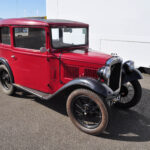















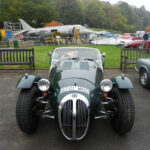
































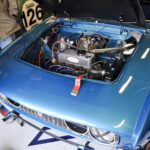




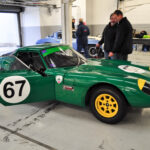




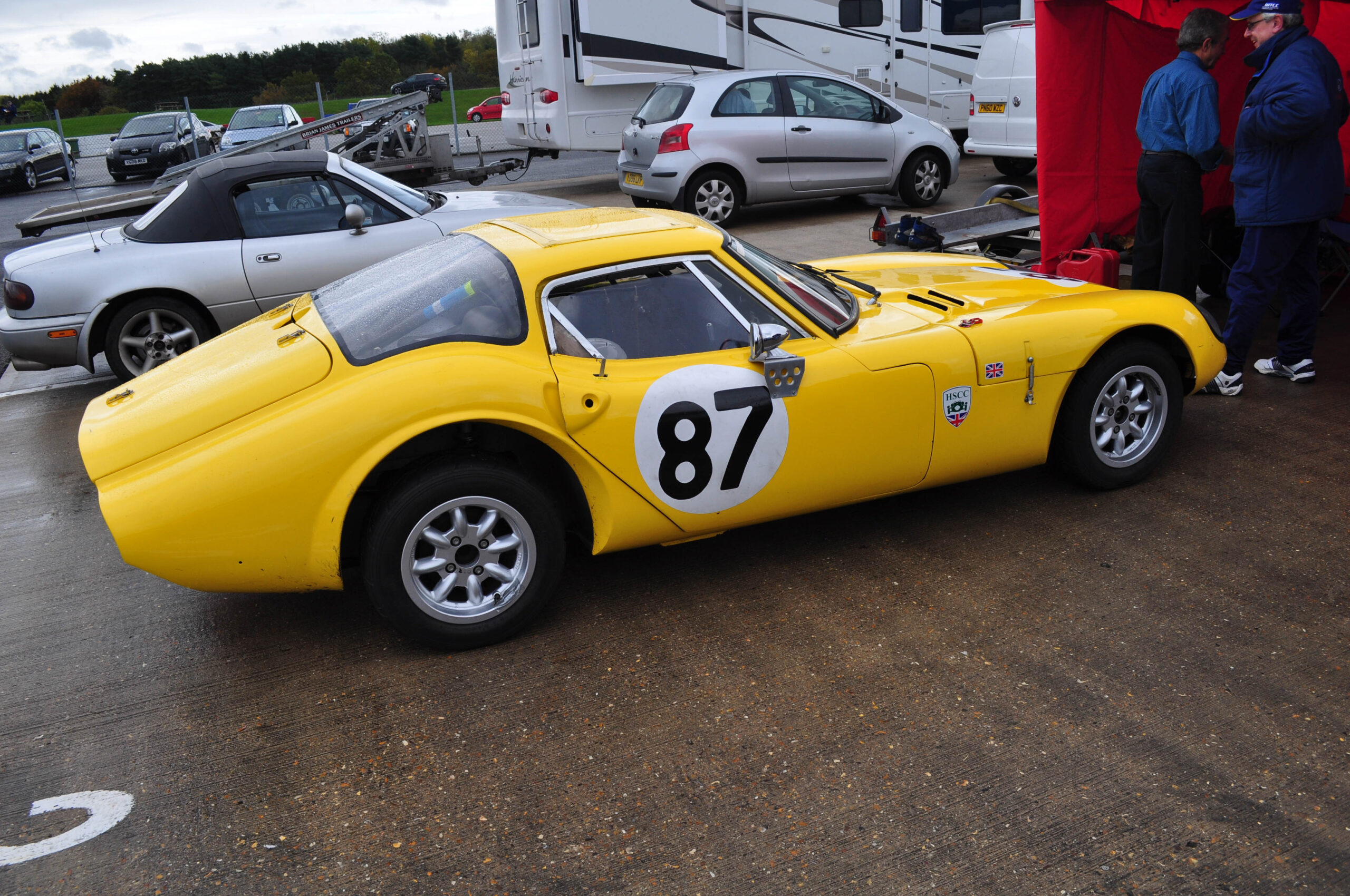














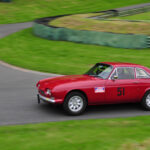


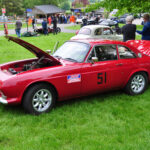




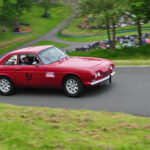





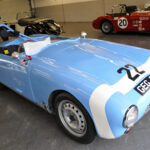



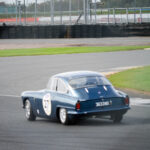

















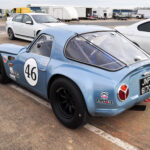











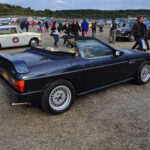

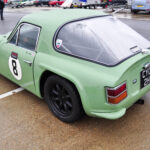













Another Triumph (Ha!).
Oglewise, Jim told me that they made instrument binnacles for imported Alfa GTVs that were converted to RHD (Bell + Colville – I think).
Hi Ken,
Thanks. Interesting snippet about the Ogle designed/made instrument binnacles – that’s one more new item of Ogle interest to add to my store little known facts.
I do remember Bell & Colville being the main UK company providing LHD to RHD Alfa conversions – especially the Spiders.
Cheers,
Phil.